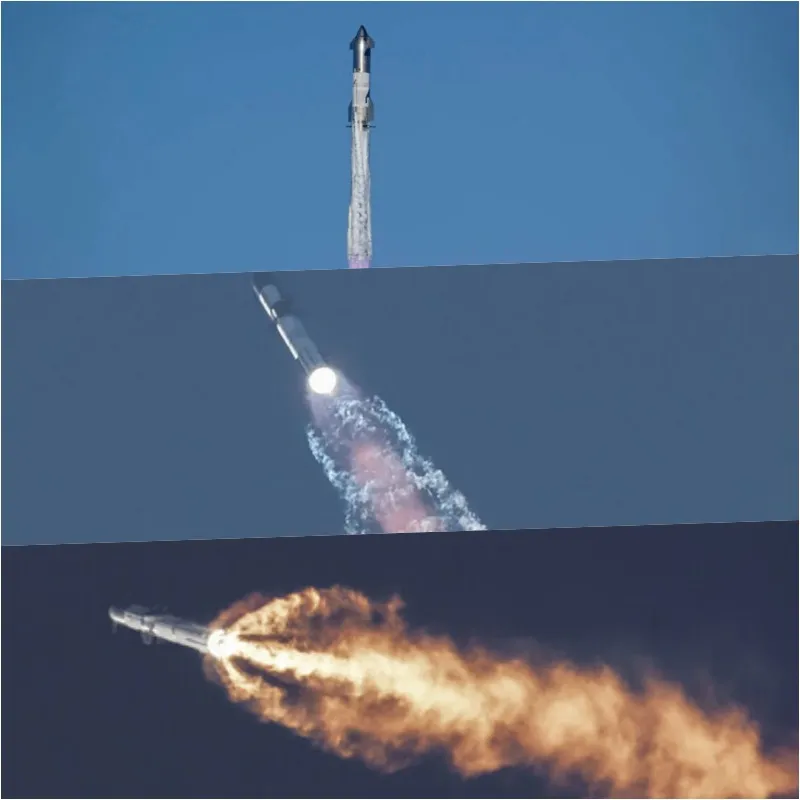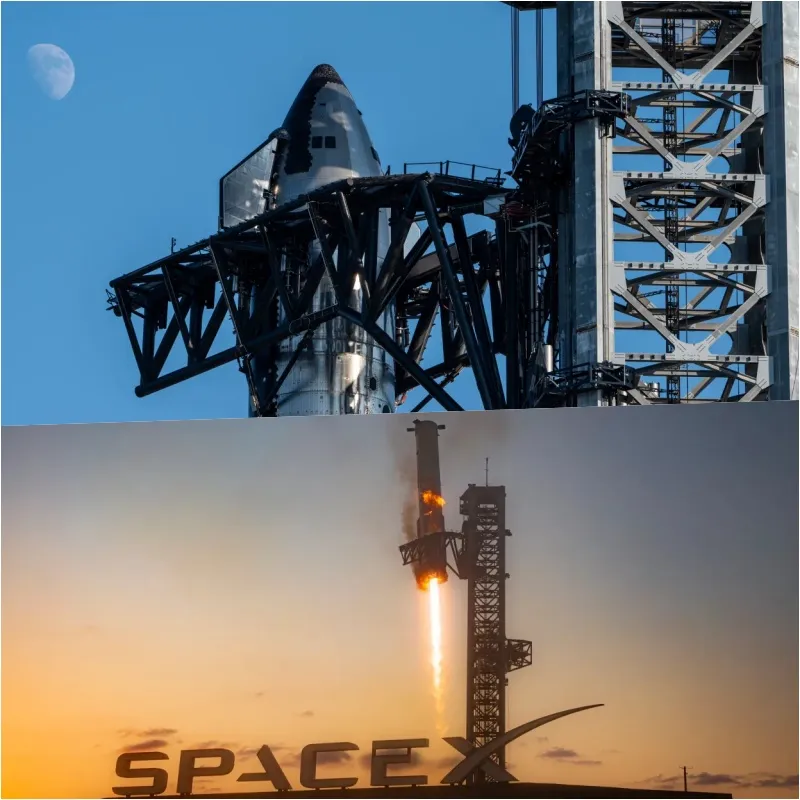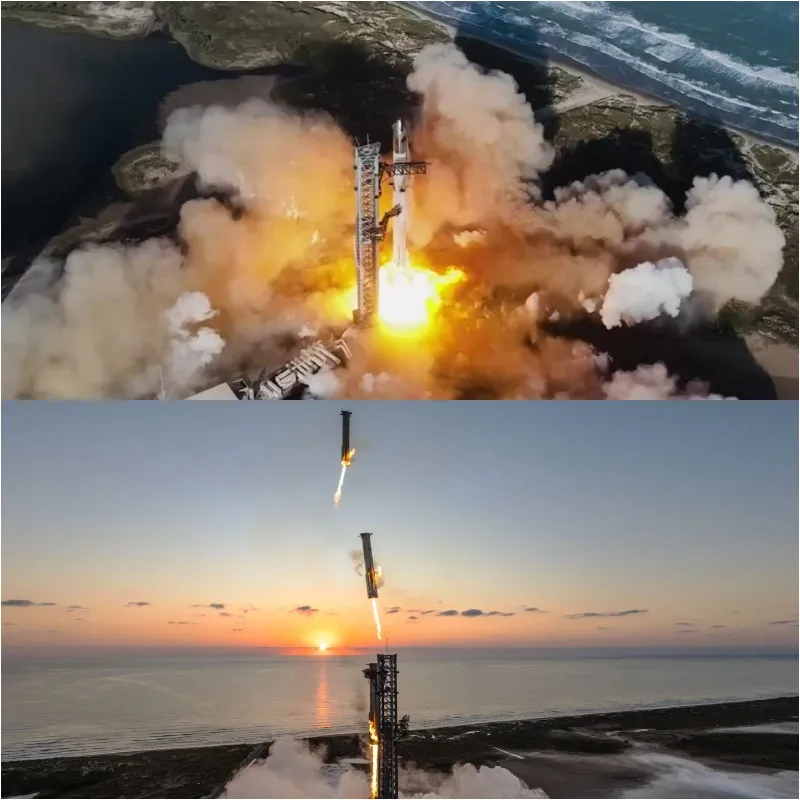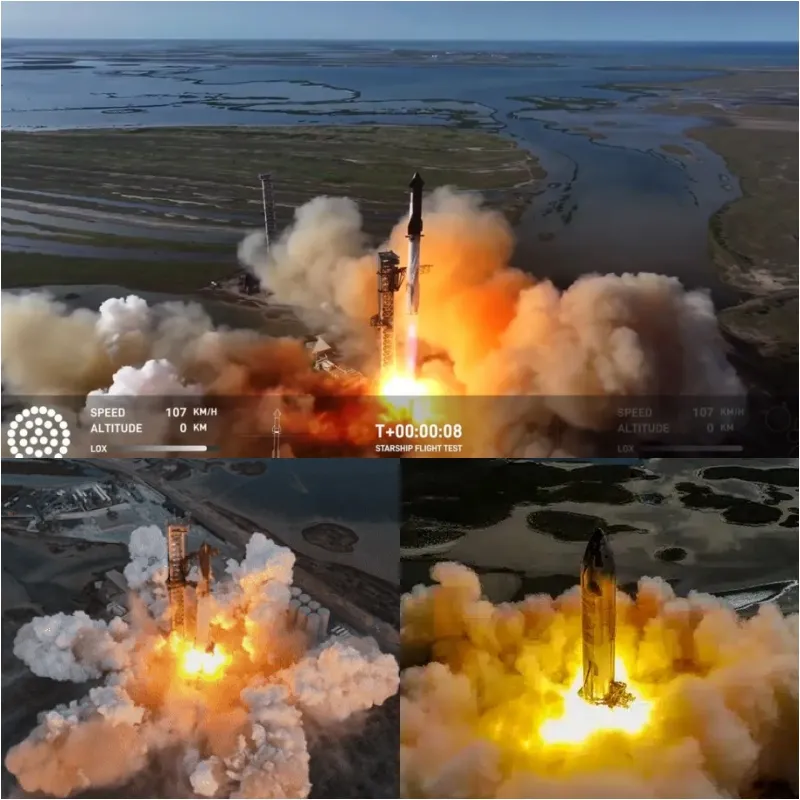Why SpaceX Cancelled the ‘Chopstick’ for the Starship Booster
SpaceX’s sixth Starship test flight marked another significant step forward but deviated from expectations as the Super Heavy booster did not return to the launch pad for a “claw grab” recovery. The innovative “Mechazilla” robotic arm, which successfully caught the booster during the fifth test in October, was not used this time due to unmet criteria.
The Launch and Planned Recovery
On November 19, the Starship rocket system, standing 121 meters tall, launched from SpaceX’s Starbase in Texas at 4:00 p.m. local time. Comprising the Super Heavy booster and the Starship upper stage, the rocket fired 33 powerful Raptor engines, propelling the upper stage into orbit. Shortly after, the booster detached and began its return journey.
SpaceX had intended to replicate the dramatic booster recovery seen in October when the robotic arms of the Mechazilla launch tower safely caught the descending booster. However, an automated system check indicated an issue with the launch tower hardware, prompting SpaceX to abort the recovery attempt. Instead, the booster performed a controlled descent and landed in the Gulf of Mexico.
“Not all criteria for the booster capture were met, so the flight director opted for a water landing,” explained SpaceX spokesperson Dan Huot. While the exact issue remains unspecified, SpaceX emphasized the importance of safety in its decision.

Milestones Achieved
Despite the missed recovery, the test was a success in several critical areas. The Starship upper stage ignited all six of its engines, followed by a controlled re-ignition of one engine in orbit—an achievement SpaceX described as a first for the vehicle.
Approximately an hour after launch, the upper stage reentered Earth’s atmosphere, enduring intense heat and pressure, before landing safely in the Indian Ocean. Modifications to the heat shield were tested, and the vehicle remained intact after the rough landing.
“This test showed that Starship’s engines, despite their complexity, can perform shutdowns and re-ignitions in space,” noted Garret Reisman, a SpaceX advisor and former NASA astronaut.

Starship’s Role in Space Exploration
The Starship rocket system is central to Elon Musk’s vision of interplanetary travel and is designed to be fully reusable. Standing at 400 feet, it is the tallest and most powerful rocket ever built, capable of generating 8,000 tons of thrust. The system comprises:
1. Super Heavy booster stage: Launches Starship into orbit and returns to Earth for reuse.
2. Starship upper stage: Carries cargo or crew further into space and performs reentry for reuse.
NASA has selected Starship as the lunar lander for the Artemis program, tasked with returning astronauts to the Moon by 2026. To achieve this, Starship will rendezvous with support vehicles in low-Earth orbit for refueling before heading to the lunar surface.

The Path Ahead
This sixth test marked the fastest turnaround time in SpaceX’s Starship campaign, occurring just weeks after the fifth flight. A daytime launch was also introduced to provide clearer footage of the upper stage’s reentry, improving data collection for future refinements.
While the claw grab recovery was not attempted, the flight demonstrated Starship’s growing capabilities and brought SpaceX closer to realizing its long-term goals. With each test, SpaceX is refining the technologies needed to achieve its ambitions of lunar landings, human missions to Mars, and beyond.




Post Comment